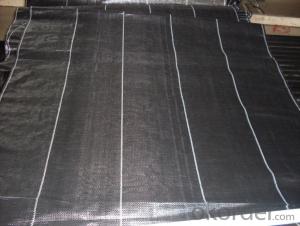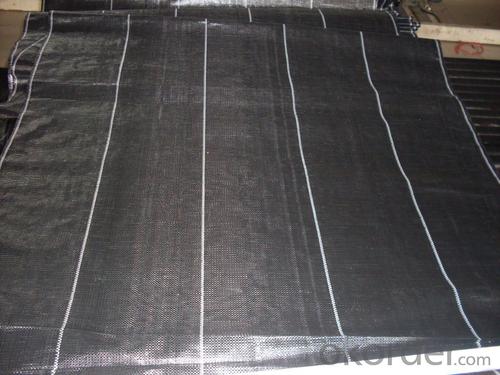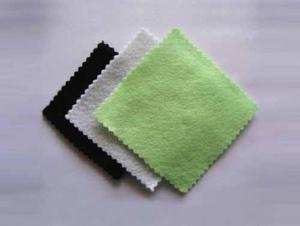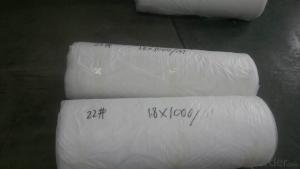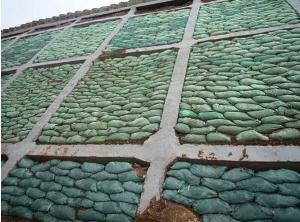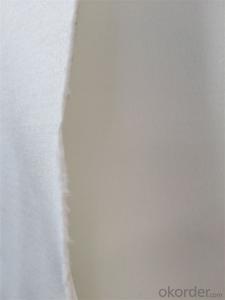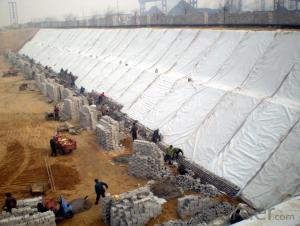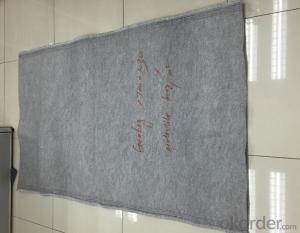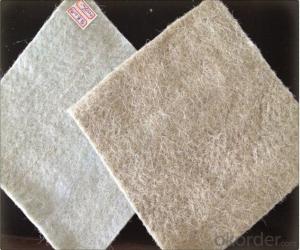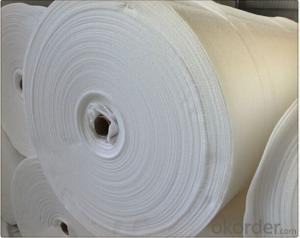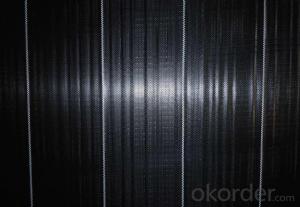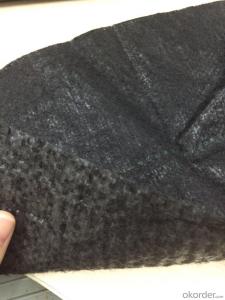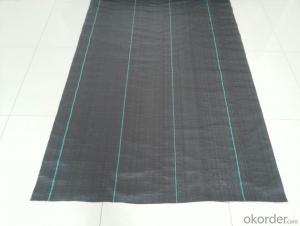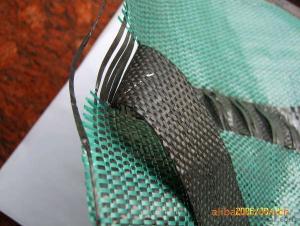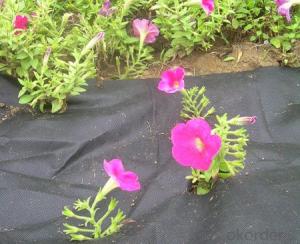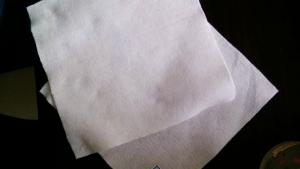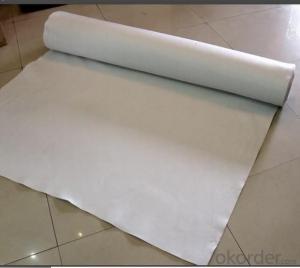GSE Geotextile PP Woven Fabric Groundcover Weed Control Fabric
- Loading Port:
- China main port
- Payment Terms:
- TT OR LC
- Min Order Qty:
- 5000 m²
- Supply Capability:
- 1000000 m²/month
OKorder Service Pledge
OKorder Financial Service
You Might Also Like
Geotextiles are composed from synthetic polypropylene/polyester fibres through a mechanical process of needling the fabric and adding, when necessary, a thermo fused process, resulting in a uniform porous structure with excellent tensile strength and chemical deterioration. Type: 1. Wovens & knitted: use various fibre types (e.g. monofilament, multi-filament, split extruded film) in different combinations. 2. Non-wovens: staple or continuous fibres that are heat treated or needlepunched to “fix” fibres relative to each other.
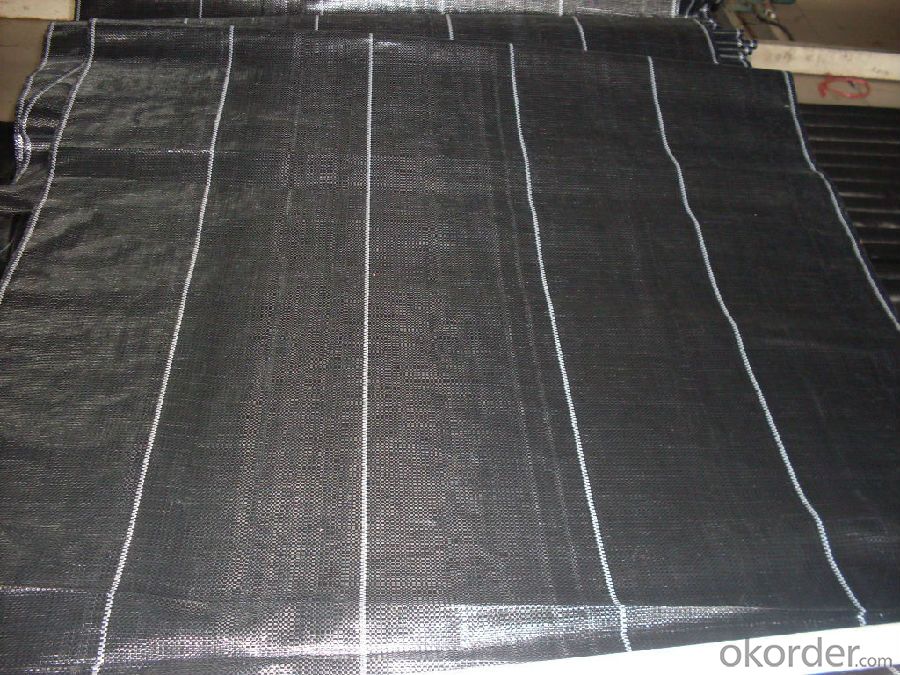
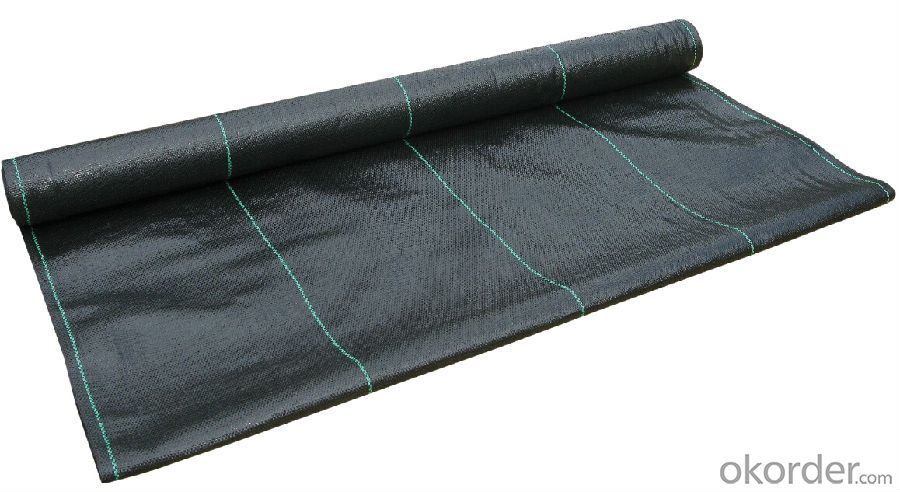
1) Weight / Mass: 75g/m2-400g/m2 .
2) Width: Within 8 m (1m-8m)
3) Length: 50m-100m/roll (as request)
4) Material: PP
5) Color: Black , white , grey, others
6) Certificate: CE/ISO9001, ISO14001 .
7) Manufacturing method: nonwoven / woven.
8) The biggest geotextile manufacturer/factory in China for many years . The equipment is introduced from Germany.
9) This geotextile can be made of polypropylene (PP).
10) The mass is available from 75g/m² to 400g/m² and the width available from 1.0m-8m, monolayer or multilayer (reinforcement geotextiles), long fiber or short fiber.
11) Color: all kinds of color are available. The annual production ability is 10 million square meters.
12) The fabric can also be heat treated by infrared at customer's requirements. Our geotextile are UV stabilized to give protection against aging under exposure to natural ultra-violet light.
Application
Major functions: Separation, filtration, drainage, reinforcement, protection, and liquid barrier
1) Filtration
The filtration layer of the dykes, river canal, seacoast, concrete slope, retaining walls. At the same time of preventing the clay granule from passing, it allows the water and the gas pass through freely.
2) Separation:
The isolation of the railway dregs and the roadbed, roadbed and the soft base, surface of the airdrome and parking lot and the groundsill, different dam materials. It isolates the soil and the gravel of two kinds different granule pathway from the groundsill or other buildings.
3 )Reinforcement:
The highway, railway, soil-stone dam, breakwater, airport, backfill soil of retaining wall, slope protection, etc in which distributes the earth stress, prevents the side-displacement of the earth body and improves the earth body stability.
4 )Protection
It prevents the bank from being washed out, protects the bank and the bottom, prevents the water and soil from being washed away.
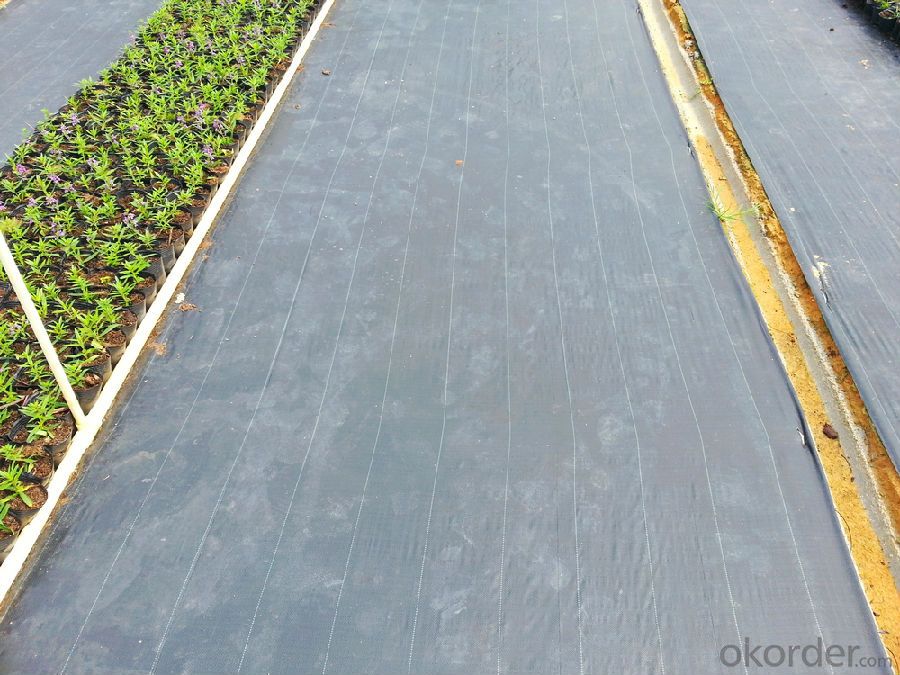
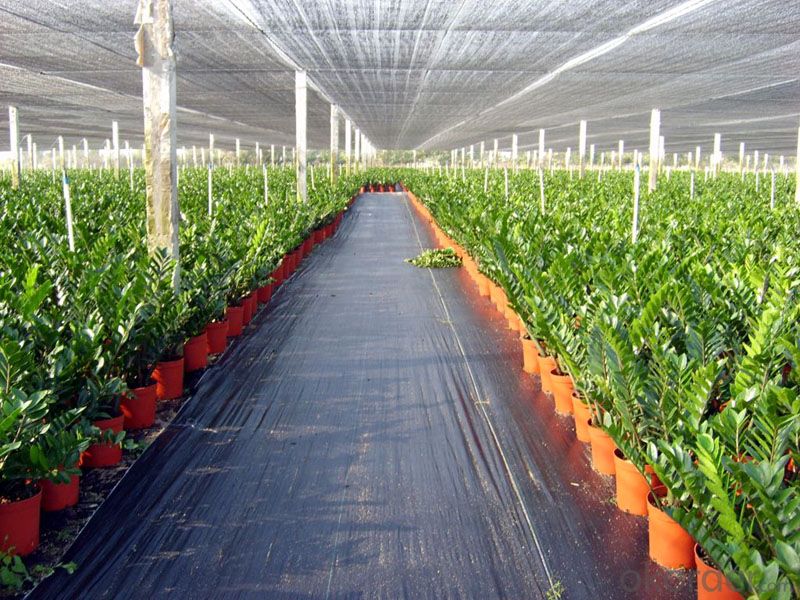
Q1: What is your minimum order quantity?
A:The minimum order quantity is 5000 ,but it is negotiable.
Q2:What is your payment terms?
A: T/T,Western Union,Paypal,L/C...
Q3:What is your delivery time?
A:Production time usually costs 2-20 days.
Waiting to cooperate with you!
- Q: What are the factors affecting the selection of geotextiles?
- The factors affecting the selection of geotextiles include the type and severity of the application, desired performance characteristics such as strength and filtration properties, site conditions such as soil type and slope stability, environmental considerations such as chemical resistance and durability, and cost-effectiveness.
- Q: What are the considerations for geotextile selection in mining operations?
- When selecting geotextiles for mining operations, several key considerations should be taken into account. These include the specific requirements of the mining site, such as the type of minerals being mined and the environmental conditions present. The geotextile's strength and durability are crucial factors, as it needs to withstand the heavy loads and harsh conditions associated with mining activities. Additionally, the geotextile's filtration properties and permeability should be assessed, as they play a vital role in controlling water flow and preventing soil erosion. Compatibility with other materials and the cost-effectiveness of the geotextile should also be considered during the selection process. Overall, choosing the right geotextile for mining operations requires a comprehensive evaluation of the site's unique characteristics and performance requirements.
- Q: Geotextile in the asphalt layer under what role
- Geotextile play the role of reinforcement, protection.
- Q: How do geotextiles help with sediment control in water bodies?
- Geotextiles help with sediment control in water bodies by acting as a barrier that filters out sediment and other pollutants from entering the water. They are placed in strategic locations to prevent erosion and retain sediment, allowing cleaner water to pass through. Additionally, geotextiles promote vegetation growth, which further aids in sediment control by stabilizing the soil and reducing erosion.
- Q: Can geotextiles be used in geocomposite applications?
- Yes, geotextiles can indeed be used in geocomposite applications. Geotextiles are often combined with other materials, such as geomembranes or geogrids, to create geocomposites that offer enhanced performance in various geotechnical and environmental applications. Geocomposites provide improved filtration, drainage, separation, and reinforcement properties, making them suitable for a wide range of civil engineering projects, including road construction, erosion control, landfill engineering, and drainage systems.
- Q: How are geotextiles manufactured?
- Geotextiles are manufactured through a variety of processes involving synthetic fibers such as polyester or polypropylene. These fibers are first extruded into long filaments or spun into yarns. Then, they are woven or non-woven into a fabric-like structure using specialized machinery. The resulting geotextiles can be further treated with additives for increased durability or specific functionalities.
- Q: Geotextile standard is broken how low?
- Geotextile of the top of the strong implementation of the national standard GB / T-2008, the standard of the geotextile bursting strength requirements in the international arena is not very low. Geotextile because it is produced by fiber acupuncture, and its breaking strength and elongation at break for the main performance indicators, even in practical applications when we are mainly using these two characteristics of geotextile. Breaking strength is called CBR bursting strength, the main test is the product of anti-puncture, the general waterproof, impermeable material requirements are higher, and geotextile is the filter, the protection of materials, so the standard requirements are lower.
- Q: Can geotextiles be used in geogrid reinforced slopes?
- Yes, geotextiles can be used in geogrid reinforced slopes. Geotextiles are often used as a separation and filtration layer between the soil and the geogrid, which helps to enhance the performance and stability of the reinforced slope.
- Q: Are there any geotextiles on the upstream dam slope?
- Supply geotextile.
- Q: What are the different factors to consider for geotextile selection in landfill applications?
- When selecting geotextiles for landfill applications, several factors need to be considered. These include the type and composition of waste materials being disposed of, the anticipated loads and stresses on the geotextile, the required filtration and separation properties, the site's environmental conditions, and the desired service life of the geotextile. Additionally, factors such as installation methods, cost-effectiveness, and compliance with regulatory requirements should also be taken into account during the selection process.
Send your message to us
GSE Geotextile PP Woven Fabric Groundcover Weed Control Fabric
- Loading Port:
- China main port
- Payment Terms:
- TT OR LC
- Min Order Qty:
- 5000 m²
- Supply Capability:
- 1000000 m²/month
OKorder Service Pledge
OKorder Financial Service
Similar products
Hot products
Hot Searches
Related keywords
